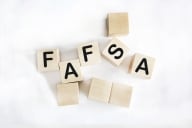You have /5 articles left.
Sign up for a free account or log in.
So I’ve got another book coming, and coming soon, like as soon as I can get it done and the publisher can put it through production. October? That’s the goal.
It’s titled Sustainable. Resilient. Free.: The Future of Public Higher Education.
The title is an aspiration, not a prediction, but despite the current horror show that is higher education’s collective response to the coronavirus pandemic, I am hopeful that such a future is possible.
I am hopeful because it is the horror show that demonstrates its necessity. For example, the chairman of the University of North Carolina Board of Governors has directed the system’s chancellors to prepare plans for budget cuts of between 25 and 50 percent.
There is no scenario under which a university remains after a 50 percent budget cut. That’s it, game over, pack up the kids and go home, so long, UNC Greensboro, been nice knowing you, NC State, Godspeed … East Carolina, Appalachian State and Elizabeth City Universities.
You had a nice 230-year run, University of North Carolina at Chapel Hill, but I’m sorry to say, it’s over.
What I’m saying is that we are confronting the unthinkable, a level of careless destruction that would unleash devastation on a massive scale as the economic, cultural and social hubs that are our public colleges and universities scattered across the land are discarded as lifeless husks and students are left to enroll in MITu-Online, brought to you by the good folks at Stanford.
If you’re lucky. We can’t just open up these prestige brands to everyone, otherwise they’re not so prestigious anymore.
There is massive angst and anger over the thought of another semester of college operations done entirely online, and yet, some of our most prominent future-of-higher-ed gurus are predicting that this will become a permanent fixture. How does this make sense to anyone?
When one choice is obviously dystopian, and the other not, why would we choose the clear path to ruin?
Maybe because our public institutions in some -- OK, many -- cases appear to be dysfunctional, bad stewards of public money, dubious candidates for bailout and assistance. In my view, many schools have played a bad hand -- steadily declining public funding -- badly, embracing an ethos of competition, chasing prestige, but despite this, the mission at the core of public higher education is sound and worth reclaiming.
Additionally, the schools I am familiar with are also filled with people who are dedicated to helping students become whoever and whatever they are meant to be. I’m confident this is also happening at places I’m not familiar with. I am seeing a tremendous amount of effort among instructors and instructional designers trying to make the best of this bad situation, even as we speak. This good faith pursuit of the educational mission has been happening even under the steadily degraded conditions that have marked the entirety of my years of involvement in higher education.
If I didn’t believe in the potential for public higher education institutions to embody the values of education and learning, I would not be writing a book in which I champion them being saved. That said, there is some reforming and reorienting to do. More than some. More like, a lot. We have managed to turn students into customers and are paying the price for this, as seen in this TikTok, in which I’d ask you to find the lie.
A good portion of the book will cover how students became customers and some of what it will take to undo this problem.
We also have some pretty good models to work from in our community colleges and city colleges such as the CUNY system, which leads the way in terms of putting students on the path to social mobility. Imagine how much more effective these institutions would be if they weren’t chronically underfunded relative to their more prestigious peers. Imagine how all schools would operate if they weren’t spending money chasing prestige because they think this is the only way to realize more funding.
Yes, this will involve massive investments of funding from the federal government. If you add in the cost of canceling the existing $1.6 trillion of student loan debt on top of the cost of making our public institutions tuition-free, we’re talking trillions.
But it is trillions that will have genuine, broad-based macroeconomic benefits, in marked contrast to the Trump administration’s and Congress’s first foray into boosting us through the pandemic.
I would like to show you more of how this would work, why I think it must work, but then you wouldn’t have to buy the book, would you?
If you share this vision and would like to play a part in bringing it further into the mainstream so we can have a conversation about the future of higher ed that goes beyond “Let them eat pixels,” please consider preordering directly from the publisher, Belt Publishing. Belt is an independent outfit located in the Midwest (Cleveland), and ordering directly from them has an outsize positive effect on their bottom line.
If you don’t share this vision, please consider preordering directly from the publisher, Belt Publishing, so you can be prepared to tell the world what a fool I am.
A project like this needs all the attention it can get.
--
Got any thoughts, tips, encouragements, discouragements about the future of public higher education? You can reach me at justvisitingihe@gmail.com.





